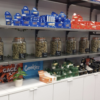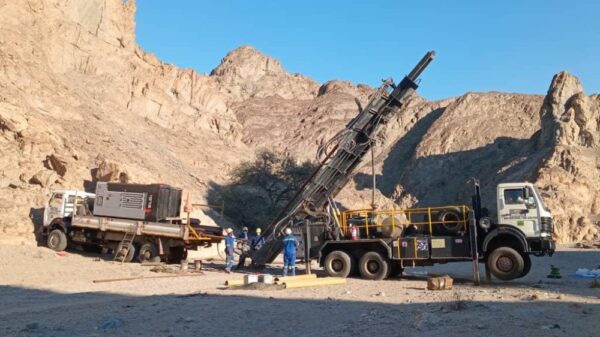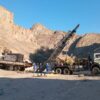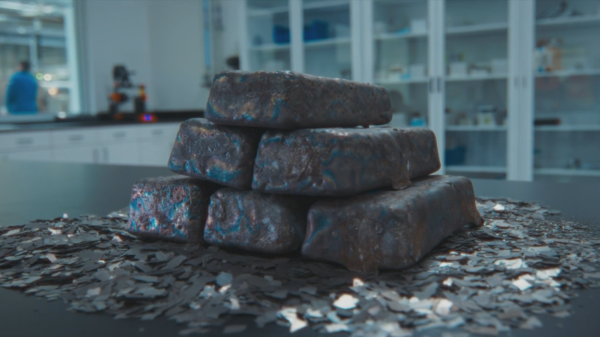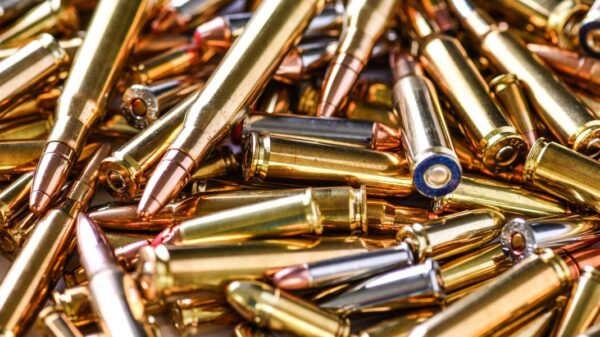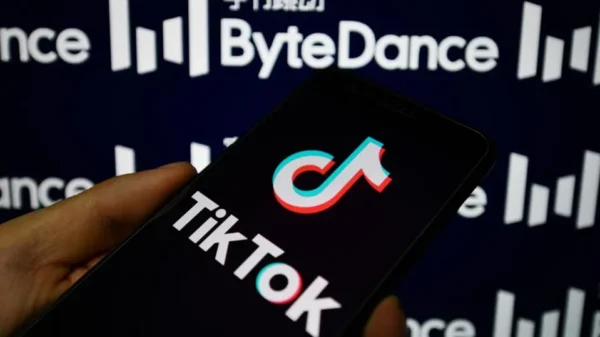Lithium has gained immense popularity in the last decade, primarily due to its pivotal role in driving the global shift towards cleaner and more sustainable energy sources. The exponential rise of electric vehicles (EVs) has been a major driving force, with lithium-ion batteries emerging as the core technology powering these environmentally friendly cars.
Additionally, lithium plays a critical role in the efficient storage of renewable energy generated from sources such as solar and wind, which is essential for improving grid reliability.
The ever-increasing demand for lithium is also fuelled by the widespread use of portable electronic devices and the growing need for energy storage solutions across various industries.
Its unique properties, characterized by lightweightness and high energy density, make lithium the preferred choice in the pursuit of eco-friendly technology and energy solutions.
Here are the top five lithium companies in the world as determined by market valuation:

The open pit of the Greenbushes mine, Western Australia, seen from the public mine lookout. Image from Calistemon via Wikimedia Commons.
Special Lithium Report: Last One Standing: The Most Undervalued Lithium Stock? Why this company could be the next big lithium buyout
1. Albemarle – World’s largest supplier of lithium for EV
Albemarle Corporation (NYSE: ALB) is a U.S.-based specialty chemicals manufacturing company headquartered in Charlotte, North Carolina. The company operates in three main divisions: lithium, bromine specialties and catalysts.
In the year 2020, Albemarle held the distinction of being the world’s largest supplier of lithium for electric vehicle batteries.
When it comes to global lithium and lithium storage product production, Albemarle, along with lithium companies Sociedad Quimica y Minr de Chile SA (NYSE: SQM) and Livent Corporation (NYSE: LTHM), collectively account for slightly over half of the total production. Meanwhile, just under half of the world’s lithium supply is produced by various entities within China.
Greenbushes in Western Australia is one of Albemarle’s largest projects. It’s a joint venture mine shared with Talison Lithium, a subsidiary of the Tianqi Lithium Corporation (SZSE: 002466) (SEHK: 9696).
The Greenbushes mine is an open-pit hard rock mine positioned roughly 250 kilometers to the south of Perth, Western Australia. It is situated about 90 kilometers southeast of the prominent bulk-handling port of Bunbury in the southwestern region of Western Australia. This lithium mining operation is in close proximity to the town of Greenbushes, which falls within the Shire of Bridgetown-Greenbushes.
At its present scale, the mine has the capacity to meet one-third of the global demand for lithium spodumene concentrate. This concentrate serves as a crucial ingredient in the production of lithium hydroxide, a key component used in the manufacturing of lithium-ion batteries.
Albemarle’s market capitalization is roughly $30 billion.
Shares dipped 0.6 per cent to $183.92 on the New York Stock Exchange on Friday.

The Atacama Dry Lake, in Chile. At the horizon, the Tumisa, Lejía and Miñiques volcanoes where SQM gets most of its lithium. Image from Francesco Mocellin via Wikimedia Commons.
Read more: Argentina enters lithium supply agreement with Livent for national battery development
2. SQM – Largest lithium producer in the world
Sociedad Quimica y Minera de Chile SA is a Chilean chemical company renowned for its role as a prominent supplier of plant nutrients, iodine, lithium and various industrial chemicals.
Despite its approximately $23 billion market valuation relative to other lithium companies in the sector, it holds the distinction of being the largest lithium producer in the world. SQM’s rich natural resources and primary production facilities are situated in the Atacama Desert, spanning across the regions of Tarapacá and Antofagasta.
In the Atacama Desert of Northern Chile, specifically in the Salar de Atacama, SQM engages in the production of lithium carbonate and lithium hydroxide extracted from brine sources. As of the year 2020, SQM disclosed a production capacity of 70 kilotons (kt) for lithium carbonate, with ambitious plans to further expand this capacity to 150 kt per year by 2020. Additionally, there exists the capability to convert lithium carbonate into lithium hydroxide at the Salar de Carmen site.
For the fiscal year 2019, SQM reported lithium-related revenues amounting to USD$505 million. Notably, in 2021, the company witnessed a substantial increase in its lithium revenues, reaching a total of USD$936.1 million.
Shares of SQM rose 0.7 per cent to $61.47 on the New York Stock Exchange on Friday.
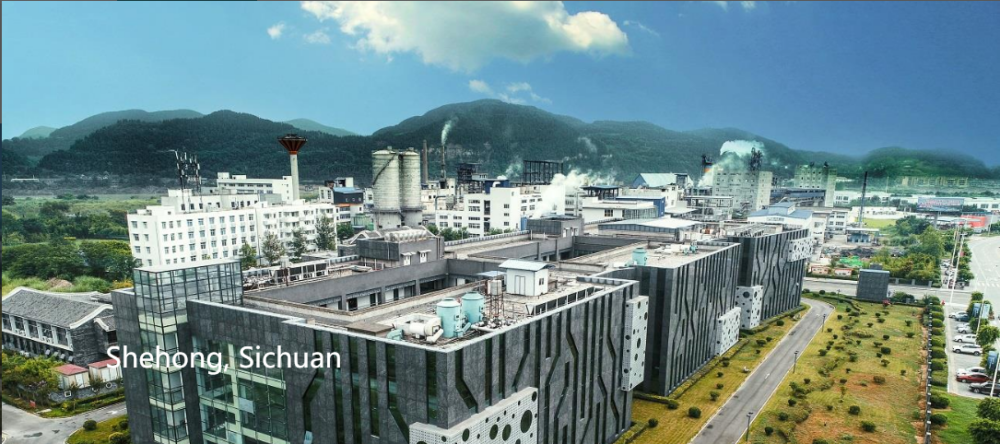
Shehong lithium production plant. Image via Tianqi Lithium.
Read more: Government of Canada establishes $1.5B fund for critical minerals projects
Read more: Biden-Harris administration invests US$32 million in rare earths and critical minerals
3. Tianqi Lithium – Controls over 46 per cent of global lithium production
The Tianqi Lithium Corporation hails from Sichuan, China, and operates primarily in mining and manufacturing. As of the year 2018, it controlled over more than 46 per cent of global lithium production.
The Tianqi Lithium Kwinana mine is a collaborative venture called Tianqi Lithium Energy Australia, a partnership involving Tianqi Lithium Corporation and Australian mining entity IGO Limited.
In 2018, Tianqi made a significant acquisition, securing a 24 percent stake in the Chilean mining firm Sociedad Química y Minera for a substantial sum of approximately USD$4.1 billion.
Established in October 1995, the Shehong Plant is situated in Shehong County, Sichuan Province, north of the Chengdu-Chongqing Economic Zone. This lithium production facility specializes in the manufacturing of various categories and grades of lithium products.
At present, the Shehong Plant maintains an annual production capacity of 24,200 tons. Leveraging an advanced control system, the plant has made substantial investments in developing production lines designed to efficiently produce a range of lithium products, including lithium carbonate, lithium hydroxide, anhydrous lithium chloride and lithium metal. The processes, cost management techniques and technologies have been optimized to ensure optimal productivity.
The company has a market cap of approximately $16.5 billion.
Shares dipped 1.3 per cent to 56.10 CYEN on the Shenzhen Stock Exchange on Friday.
Read more: Nevada Sunrise Metals appoints ABH Engineering for Nevada lithium studies
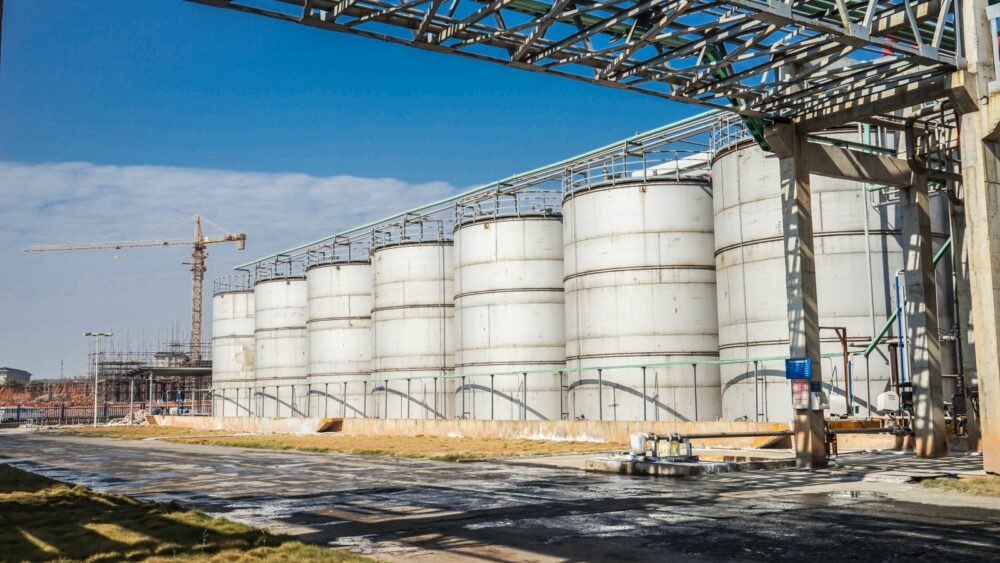
The Mahong Factory produces 15,000 tons of lithium carbonate, 12,000 tons of lithium chloride and other compound products each year. Image via Ganfeng Lithium.
4. Ganfeng Lithium – Largest lithium salt producer in China, and third in the world
Ganfeng Lithium Co Ltd (SZSE: 002460) (SEHK: 1772) is a global company specializing in the production of lithium, lithium-based products, various metals and batteries. Established by Li Liangbin in the year 2000, the company is headquartered in Xinyu, Jiangxi, China and operates both domestically and internationally.
It holds the position of being the largest lithium salt producer in China and ranks as the third largest globally. Additionally, it stands as the world’s second-largest lithium processor, following Chilean company Sociedad Química y Minera. With a market capitalization of approximately $16.4 billion, it holds a significant presence in the lithium industry.
The company doesn’t just have one property, but instead actively engages in overseas investments in lithium companies and projects as part of its strategy to secure long-term competitive resources. The company holds ownership of three lithium brine projects located in Argentina and serves as the largest shareholder of Lithium Americas (TSX: LAC) (NYSE: LAC).
In 2014, Ganfeng made an investment in the Mariana lithium-potassium brine project situated in Argentina. In 2015, the company expanded its portfolio by investing in the Australian firm Reed Industrial Minerals, thereby acquiring rights to the Mount Marion spodumene project.
In 2021, Ganfeng successfully acquired a 50 per cent ownership stake in the Goulamina mine, a lithium mining operation located in Mali’s Ségou Region. Furthermore, the company has established investments and contractual agreements spanning across regions such as China, Ireland, Mexico and the Democratic Republic of the Congo.
Shares of Ganfeng dipped by 1.62 per cent to 45.5 CYN on Friday on the Shenzhen Stock Exchange.

Image via Mineral Resources Ltd
5. Mineral Resources – Operates two significant properties in Western Australia
Mineral Resources Ltd (ASX: MIN) is a prominent Western Australian mining services company. It came into existence in July 2006 through the merger of several key businesses: PIHA, a pipeline manufacturing and contracting enterprise, Crushing Services International and Process Minerals International. Following this merger, the company was listed on the Australian Securities Exchange.
In recognition of its significant market presence and capitalization, Mineral Resources earned a coveted spot in the S&P/ASX 50 in June 2022, designating it as one of the 50 largest companies trading on the ASX. It’s market capitalization is in the range of $11 billion.
Mineral Resources operates primarily in the iron ore sector, but is also actively engaged in the mining of hard rock lithium, with operations in two significant locations within Western Australia: Mount Marion in the Goldfields and Wodgina in the Pilbara.
Situated 120 kilometers south of Port Hedland in Western Australia’s Pilbara region, the Wodgina lithium operation is renowned as one of the world’s largest known hard rock lithium deposits. Wodgina is operated through the MARBL Lithium Joint Venture, an unincorporated joint venture wherein MinRes holds 40 per cent ownership, and Albemarle Corporation, a leading lithium hydroxide producer, holds 60 per cent ownership. The mine boasts an estimated mine life exceeding 30 years.
Mining operations at Wodgina are entirely managed by MinRes, in addition to overseeing a spodumene concentrate plant with an annual production capacity of 750,000 tonnes. This plant consists of three processing trains, each with the capability to produce 250,000 tonnes per annum of 6 per cent spodumene product.
In 2023, the joint venture announced a binding agreement to restructure the MARBL JV, which will result in MinRes increasing its ownership stake in the Wodgina mine to 50 per cent.
Spodumene extracted at Wodgina is transported via Port Hedland for further processing, ultimately yielding battery-grade lithium products for global markets.
Shares of Mineral Resources rose 3.4 per cent to $71.05 AUD on the Australian Stock Exchange on Friday.
joseph@mugglehead.com





